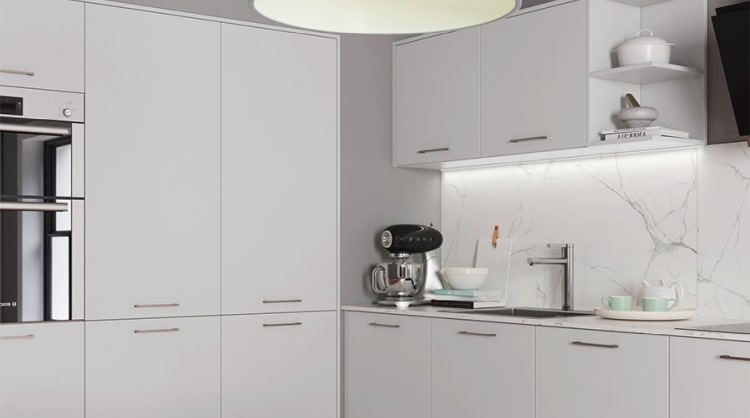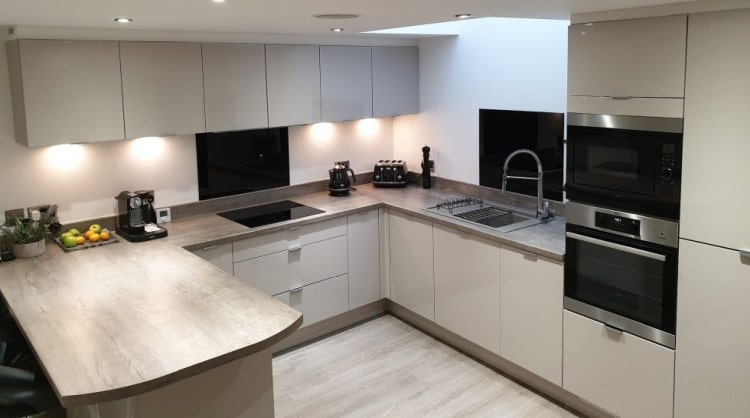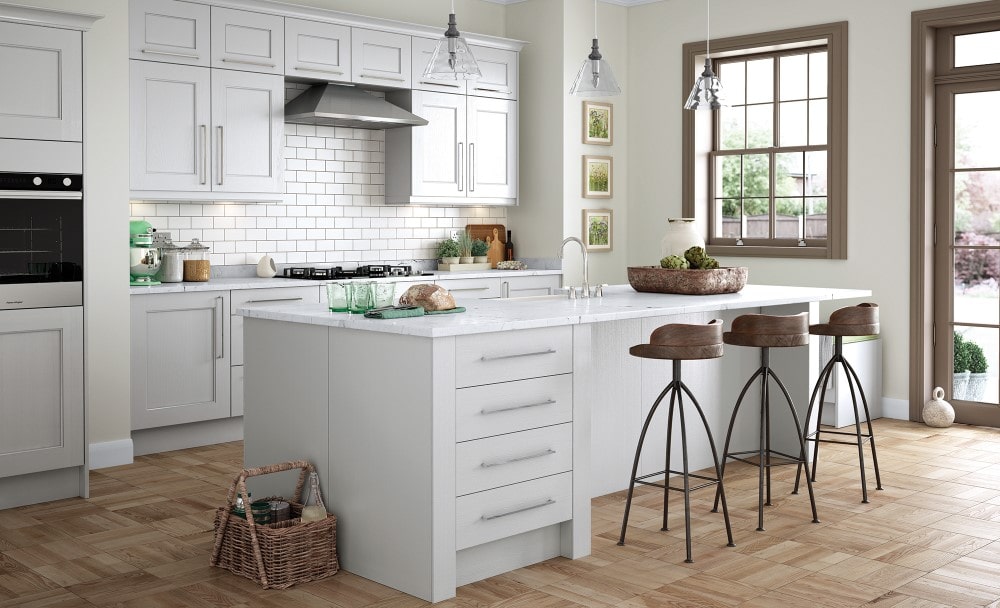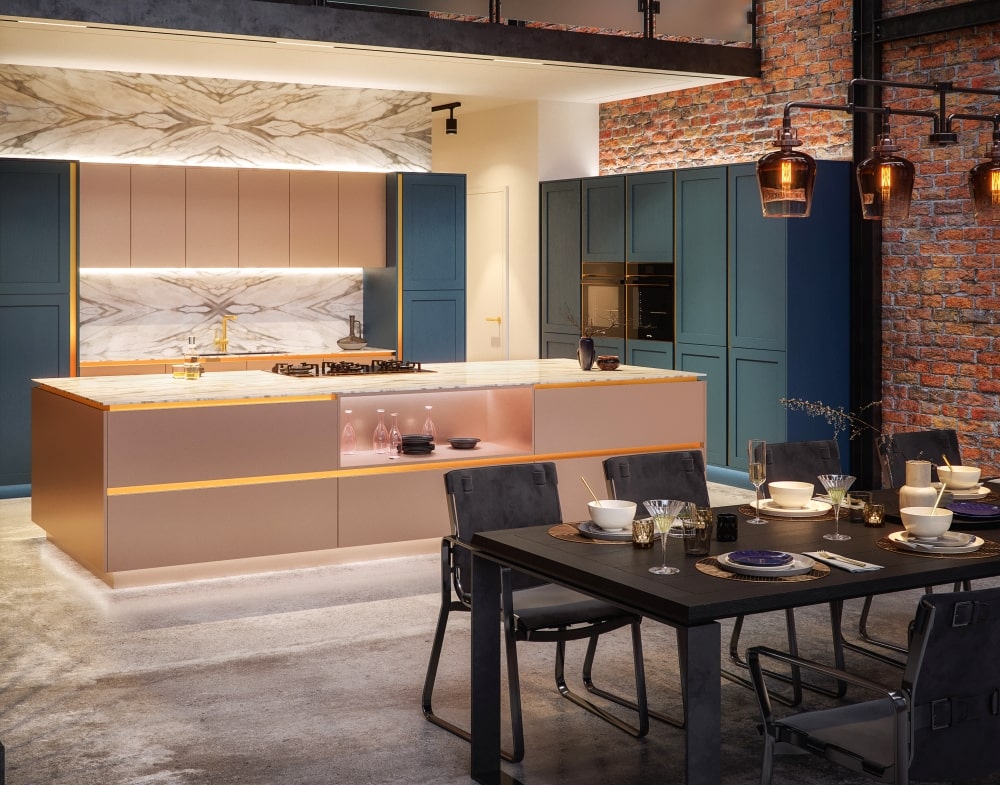When it comes to designing luxury kitchens, different colours and the effect they can have on your space, are often underestimated.
It may be tempting to throw your favourite colours together and hope for the best. But it’s worth spending a bit of time thinking about different kinds of colour combinations and how they work.
So what are the perfect colour combinations? And what factors do you need to consider? Let’s take a look at colour theory and give some examples of colour schemes that will lift your kitchen to a whole new level.
Understanding Colour Combinations
Having a basic understanding of colour combinations is a good starting point if you want to create the desired look in your kitchen.
To make it easier, take a look at a colour wheel as a point of reference.

Monochromatic palettes
Monochromatic schemes use the same hue throughout but at different lightness and saturation levels. This can create subtle contrasts between the elements of your kitchen despite it being the same colour, and this creates a beautifully harmonious look.
For example:
- Mix a dark grey floor with cool grey countertops and white cabinets. This creates a balance of similar colours and means you can use decorations and accessories, such as plant pots and coloured cookware, to add pops of colour.
- Combine white or black with a single hue of colour. For instance, you could use classic wooden floors and light brown cabinets with black or white countertops to create a visual break between similar shades.

Using complementary colours
Complementary colours sit at opposite ends on the colour wheel and provide a high level of contrast which can make them bright and prominent. However, if you use them in a kitchen colour scheme, they can be jarring especially if they’re fully saturated. Complementary colours can be a difficult concept to use in kitchens, but not impossible.
For example:
- Contrast your kitchen island with your countertops and cabinets. You could try navy cabinets on your kitchen island and light brown on your main cabinets.
- Or try wooden floors together with dark navy cabinets and white granite countertops.
- Or if you have a kitchen island, try white cabinets and brown wooden countertops to create even more contrast.

Opt for analogous colours
Analogous colours sit next to each other on the colour wheel and as they match well, they create relaxed and comfortable spaces. These colours are often naturally occurring in nature too which creates a pleasing colour scheme. However, it’s important to pick one dominant colour and use the others as accents so that it doesn’t feel too overwhelming.
For example:
- A popular analogous colour scheme is the classic autumnal trio of yellow, green and brown. Use brown as the main colour, such as wooden floors to enhance the natural feel of the colour scheme, dark brown countertops, and light yellow for cabinets. Add green accents by placing plants around your kitchen for a finishing touch.
- If you prefer cooler colours, try a mixture of navy, light blue and teal. Focus on navy as the dominant colour to use for your cabinets and use a dark navy for countertops and add teal accents. Use a light floor such as natural stone to add a bit of contrast.

Pick colour triads
Colour triads are evenly spaced in a triangle across the colour wheel. This makes the colour scheme extremely vibrant, even if you lower the saturation of the hues. To use colour triads successfully, you need to let one colour be the main focus while the other two are used as accents, much like with analogous colour schemes
For example:
- Brown, green and navy is a popular triad colour scheme. Use brown shades for flooring and countertops and combine with navy cabinets. Then use plants to add green accents.
- A colourful triadic colour scheme is lime green, blue and magenta and this scheme can make your kitchen pop with a playful assortment of colours. Use white as a base then colour your chairs, accessories, kitchen utensils, dinnerware and appliances with a mix of lime green, blue and magenta. You can also use blue as the dominant colour for your cabinets.
